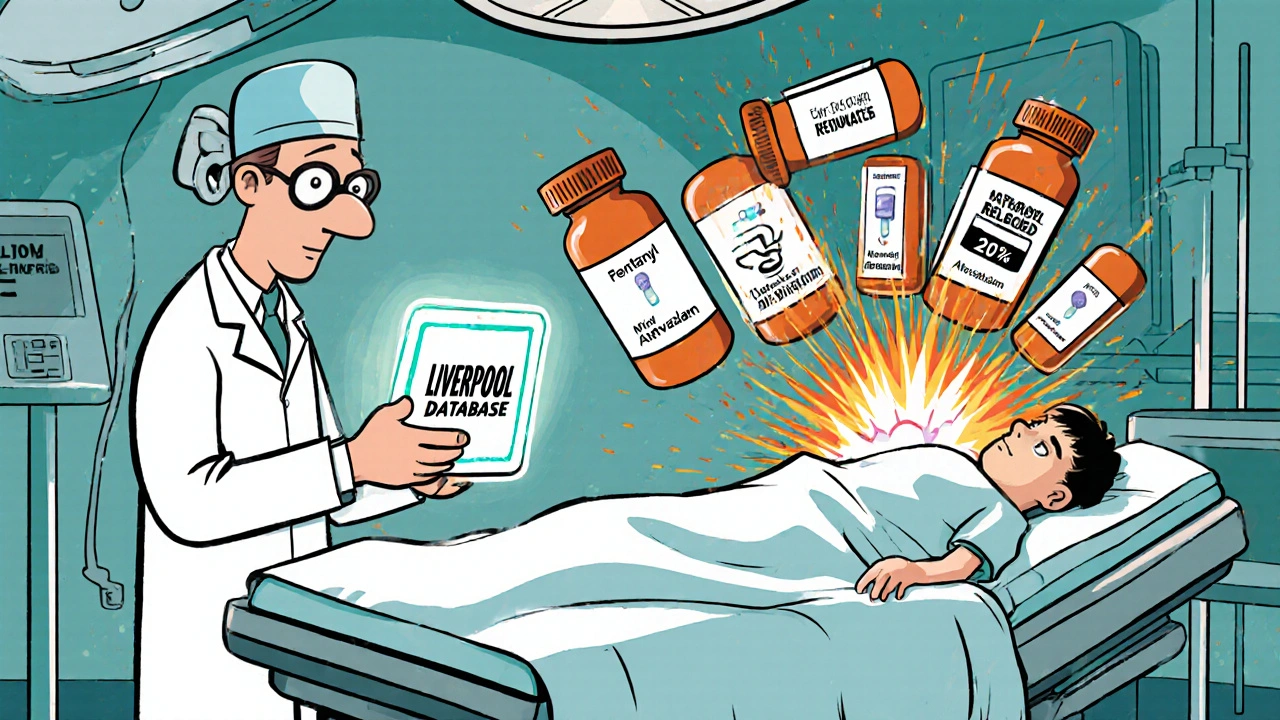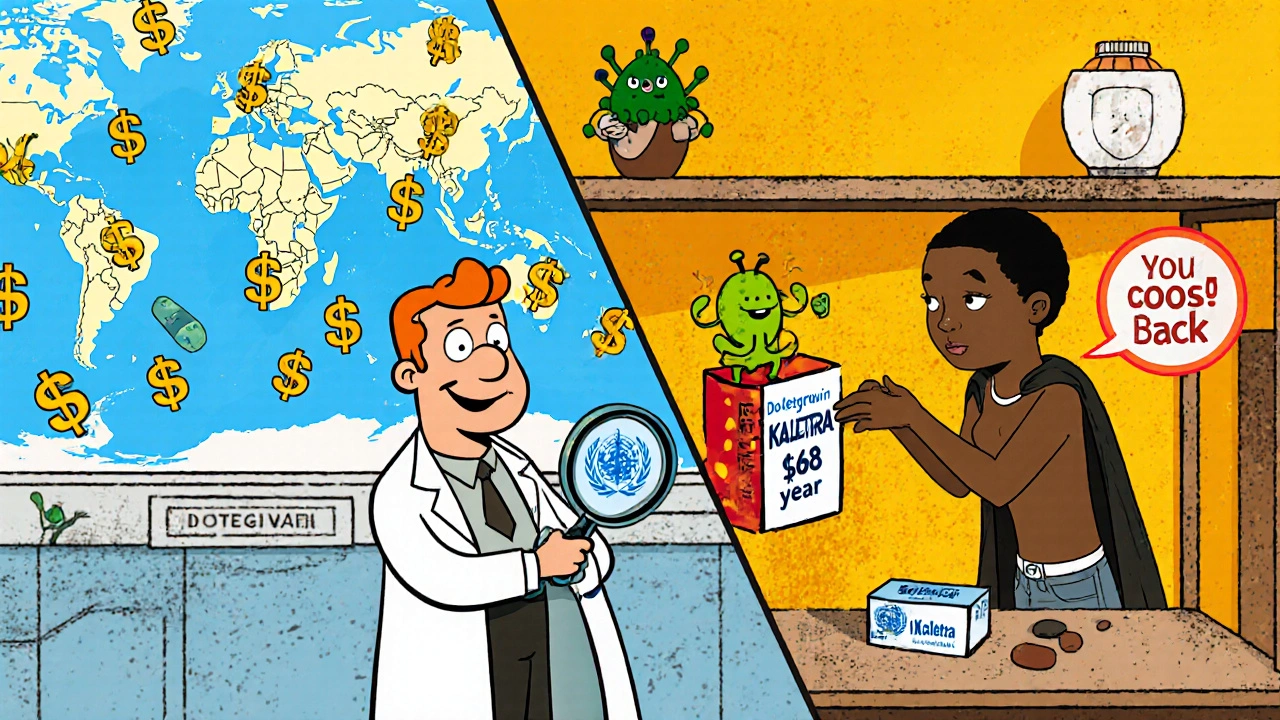When doctors prescribe lopinavir/ritonavir (Kaletra), they’re not just giving two drugs-they’re setting off a chain reaction inside the body that can change how dozens of other medications work. At first glance, it looks simple: 400 mg of lopinavir with 100 mg of ritonavir, taken twice a day to treat HIV. But behind that dosage is one of the most powerful and unpredictable drug interactions in modern medicine. Ritonavir isn’t there to fight the virus. It’s there to shut down a liver enzyme called CYP3A4-so lopinavir can stay in the bloodstream longer and do its job. But in doing that, ritonavir doesn’t just help lopinavir. It messes with almost everything else you’re taking.
How Ritonavir Turns Off the Liver’s Cleanup Crew
The liver has a team of enzymes that break down drugs so your body can get rid of them. CYP3A4 is the biggest player in that team. It handles more than half of all prescription medications-from statins to painkillers to blood thinners. Lopinavir? It’s almost entirely broken down by CYP3A4. Without help, lopinavir would vanish from your system in under 7 hours. That’s why ritonavir was added-not as a treatment, but as a shut-off switch.
Ritonavir doesn’t just block CYP3A4 temporarily. It permanently damages the enzyme. Studies show it binds to the enzyme’s active site, destroys its heme group, and even sticks pieces of itself to the protein structure. This isn’t a reversible block-it’s a demolition job. And because ritonavir is so potent, even a tiny dose (100 mg) knocks CYP3A4 activity down to 15% of normal. That’s enough to make lopinavir last 10 times longer. But here’s the catch: ritonavir doesn’t just turn off CYP3A4. It also turns on other enzymes like CYP1A2 and CYP2C9. That means it’s both a brake and an accelerator at the same time.
The Domino Effect: 1,247 Known Drug Interactions
The Liverpool HIV Interactions Database, updated in July 2023, lists 1,247 drugs that interact with lopinavir/ritonavir. That’s more than any other antiretroviral combo. Why? Because ritonavir’s dual nature makes outcomes hard to predict. Take warfarin, a blood thinner. Ritonavir induces CYP2C9, which breaks down warfarin faster. That means patients on both drugs can develop dangerous clots if their INR isn’t checked weekly. On the flip side, midazolam-a sedative used in surgery-is metabolized by CYP3A4. When taken with ritonavir, midazolam levels spike by 500%. One standard dose can send a patient into prolonged unconsciousness.
Here’s what else gets affected:
- Tacrolimus (organ transplant drug): Levels rise 3-5x. Dose must be cut by 75% or patients risk kidney failure.
- Rivaroxaban (blood thinner): Contraindicated. Risk of fatal bleeding skyrockets.
- Methadone: Ritonavir speeds up its breakdown. Patients often need a 20-33% dose increase to avoid withdrawal.
- Statins (like simvastatin): Levels soar. Muscle damage (rhabdomyolysis) is a real danger. Pravastatin or rosuvastatin are safer alternatives.
- Hormonal contraceptives: Ritonavir cuts effectiveness by 50%. Backup contraception isn’t optional-it’s mandatory.
- Voriconazole (antifungal): Unpredictable levels. Sometimes too low (treatment fails), sometimes too high (liver toxicity). Avoid entirely.
Even common over-the-counter meds like St. John’s wort can drop lopinavir levels by 70%. Herbal supplements aren’t safe just because they’re natural.
Why This Matters in Real Life
Imagine a 52-year-old man on lopinavir/ritonavir for HIV. He’s also on atorvastatin for high cholesterol, amiodarone for an irregular heartbeat, and omeprazole for acid reflux. All three are metabolized by CYP3A4. Add in a new prescription for fentanyl after knee surgery-already a high-risk combo-and you’ve got a perfect storm. His fentanyl levels could triple. He might stop breathing. His cholesterol drug could wreck his muscles. His heart rhythm could go haywire.
This isn’t hypothetical. A 2008 study showed that when patients on lopinavir/ritonavir took rifampicin (for tuberculosis), their lopinavir levels dropped by 76%. Hepatotoxicity jumped from 11% to 33%. That’s not a side effect-it’s a medical emergency.
Anesthesiologists know this well. Before any surgery, they check the Liverpool database. If a patient is on ritonavir, they reduce fentanyl by 60-80%, midazolam by 70%, and avoid propofol if possible. They don’t guess. They look it up. Every time.

Why Is This Still Used?
If it’s so risky, why isn’t it banned? Because in some places, there’s no better option.
In high-income countries, lopinavir/ritonavir has been replaced by darunavir/cobicistat or integrase inhibitors like dolutegravir. These newer drugs have fewer interactions, better side effect profiles, and once-daily dosing. In the U.S., less than 5% of new HIV patients get lopinavir/ritonavir today.
But in low- and middle-income countries, it’s still common. Why? Cost. A year of lopinavir/ritonavir costs about $68 through PEPFAR programs. Dolutegravir? $287. For governments with tight budgets, that’s the difference between treating 10,000 people or 2,000.
It’s also stable. Unlike newer drugs that need refrigeration or have strict food requirements, lopinavir/ritonavir can sit in a hot clinic for months and still work. That’s why WHO still lists it as an essential medicine.
The New Twist: Paxlovid and the ‘Rebound’ Problem
When the pandemic hit, ritonavir made a comeback-not for HIV, but for COVID-19. In Paxlovid, it’s paired with nirmatrelvir. Same mechanism: ritonavir boosts nirmatrelvir levels 15-fold. It worked. The EPIC-HR trial showed an 89% drop in hospitalizations when taken early.
But then came the rebound. Some patients got better, stopped the pills, and then got sick again a few days later. Why? Because ritonavir sticks around longer than nirmatrelvir. After five days of treatment, ritonavir is still blocking CYP3A4. But nirmatrelvir is gone. That leaves the virus with a window to come back-because the immune system hasn’t fully caught up, and there’s no drug left to suppress it.
This isn’t a failure of the drug. It’s a flaw in the timing. And it’s a reminder: ritonavir’s power doesn’t turn off when you stop taking it. Its effects linger.

What Doctors Must Do
If you’re prescribing or taking lopinavir/ritonavir, here’s what you need to do:
- Check every medication-prescription, OTC, herbal, supplements. Use the Liverpool HIV Interactions Database. It’s free, updated monthly, and used by over 2 million clinicians yearly.
- Don’t assume safety. Just because a drug is ‘common’ doesn’t mean it’s safe. Even ibuprofen can interact if taken long-term.
- Monitor closely. For warfarin, check INR weekly. For tacrolimus, check blood levels every 3 days after starting. For statins, watch for muscle pain.
- Adjust doses before you start. Don’t wait for side effects. If you’re adding ritonavir to a regimen, reduce doses of CYP3A4 substrates preemptively.
- Use alternatives when possible. If someone needs a statin, pick rosuvastatin. If they need an anticoagulant, pick apixaban over rivaroxaban. If they need contraception, offer an IUD or implant.
And if the patient has liver problems? Child-Pugh Class B? Cut the dose to once daily. Class C? Don’t use it at all. The liver can’t handle the extra load.
The Future: Is This the End of an Era?
Lopinavir/ritonavir is fading. In the U.S., it’s nearly gone. In Europe, it’s restricted. Even in places where it’s still used, dolutegravir-based regimens are spreading fast. By 2027, UNAIDS predicts its use in low-income countries will drop to 12%.
But its legacy? It changed how we think about drug design. Ritonavir proved you could use one drug to boost another-not by killing the virus, but by controlling the body’s own chemistry. That idea birthed cobicistat, and now it’s behind drugs like Paxlovid.
But it also showed us the cost of complexity. A single pill can have 1,247 possible consequences. That’s not science. That’s a minefield. And until we have drugs that work without breaking the body’s natural systems, we’ll keep walking through it-one careful check at a time.


Comments (9)
Meghan Rose
4 Nov, 2025I once had a patient on ritonavir who took St. John’s wort for ‘anxiety’ and ended up in the ER with detectable HIV viral load. I swear, people think natural means safe. It’s not. It’s just a different kind of dangerous.
Steve Phillips
5 Nov, 2025Let’s be real-ritonavir isn’t a drug, it’s a biochemical terrorist. It doesn’t just interact, it *sabotages*. It’s like giving someone a flamethrower to light a candle. And don’t even get me started on Paxlovid’s rebound… it’s not a feature, it’s a bug disguised as a breakthrough. The pharma bros are out here playing god with enzyme kinetics and calling it ‘innovation.’ 😒🔥
Rachel Puno
5 Nov, 2025This is such an important post. Seriously. If you’re on any kind of meds-especially statins, blood thinners, or even OTC stuff-please, please, please check the Liverpool database. It’s free, it’s updated, and it could save your life. You don’t need to be a doctor to use it. Just type in your meds and hit search. It’s that simple. You’ve got this.
Clyde Verdin Jr
6 Nov, 2025LOL so ritonavir is the ‘villain’ now? 😂 Like, it’s not the drug’s fault people can’t read a label. Also, Paxlovid rebound? Bro, that’s just your immune system saying ‘I’m not done yet.’ Stop blaming the medicine and start blaming the ‘take 5 days and call it a day’ mentality. 🤷♂️💥
Key Davis
7 Nov, 2025While the pharmacological complexity of ritonavir boosting is undeniably profound, one must not overlook the ethical imperative of global health equity. The continued use of lopinavir/ritonavir in low- and middle-income nations is not an indictment of medical inferiority, but rather a testament to pragmatic resource allocation under systemic constraints. To dismiss its utility is to ignore the lived reality of millions who would otherwise receive no antiretroviral therapy whatsoever.
Cris Ceceris
9 Nov, 2025It’s wild to think that a tiny molecule can flip a switch in your liver and change how every other drug works. Like, we’re basically letting one drug hijack the body’s entire detox system. What does that say about how little we really understand about human biology? We’re playing Jenga with enzymes and calling it medicine. Maybe we need drugs that don’t break the system… instead of just breaking it better.
Brad Seymour
9 Nov, 2025Man, I love how this post breaks it down so clearly. I’m a nurse in London and we’ve had a few cases where patients didn’t realize their pain meds were gonna go haywire with their HIV meds. This is the kind of info that needs to be shouted from the rooftops. Thanks for writing it!
Malia Blom
9 Nov, 2025So let me get this straight-ritonavir is basically the ultimate gatekeeper, but it’s also a chaotic neutral force that sometimes helps and sometimes murders your liver? And we’re still using it because it’s cheap? So we’re trading safety for savings like it’s a discount coupon for survival? That’s not science. That’s capitalism with a stethoscope.
Abigail Chrisma
10 Nov, 2025Thank you for this. I work with a community clinic that still prescribes Kaletra because it’s the only option we can afford. We’ve trained every nurse and phlebotomist to check the Liverpool database before any new script. It’s not glamorous, but it’s keeping people alive. And yes-we tell them about the birth control thing every. single. time. No exceptions.